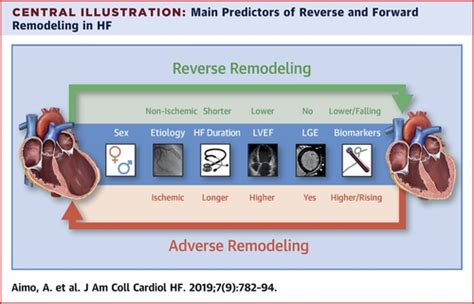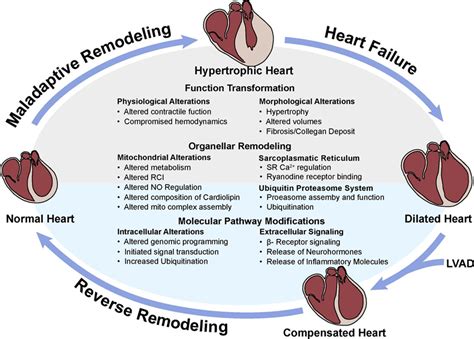lv enhancing therapies | reverse lv restoration lv enhancing therapies Reverse left ventricular (LV) remodeling and recovery of LV function are associated with improved clinical outcomes in patients with heart failure with reduced ejection fraction. The best way to grind for exp. is to grind for exp. .No, I'm not joking. The 40AP daily ember gathering quest is your best friend. It will grant you oodles of golden experience cards that.
0 · reverse lv restoration
1 · reverse lv recovery
2 · lvef levels for cancer treatment
3 · lvef guidelines for patients
4 · lv dysfunction treatment guidelines
5 · echocardiogram guidelines for lv
6 · cancer induced lv guidelines
7 · cancer induced lv dysfunction
Apliecinu, ka vēlos saņemt Finea.lv (SIA Finanza) pakalpojumus un līdz ar to atļauju tai saņemt un turpmāk apstrādāt manus personas datus saskaņā ar Privātuma politiku. Apliecinu, ka aizdevumu izmantošu tikai savām vajadzībām.
Reverse left ventricular (LV) remodeling and recovery of LV function are associated with improved clinical outcomes in patients with heart failure with reduced ejection fraction. The increasing sophistication of coronary artery bypass grafting (CABG) and percutaneous intervention (PCI) raises important questions about the appropriate role of . The tissue remodeling accompanied by the improvement in LV ejection fraction and reduction in LV volume suggest that guideline-directed medical therapy is effective and needs to be continued in patients who . 1. Identifying patients at elevated risk for cardiac dysfunction. 2. Treatment of patients' CV risk factors to reduce their risk. 3. Modifications in anthracycline and radiation .
Left Ventricular Reverse Remodeling in Heart Failure: Remission to Recovery. Jacinthe Boulet, MD, CM a ∙ Mandeep R. Mehra, MD, MSc, FRCP b .LV post-infarct remodeling impacted negatively on survival in the SAVE (Survival and Ventricular Enlargement) trial, in which 2,231 patients with an acute myocardial infarction and LV dysfunction were randomized to an ACE inhibitor .
It is clear that markedly depressed LV function in the setting of ischemic cardiomyopathy can be reversed with revascularization . Moreover, those patients with ischemic symptoms and the . Abstract. Background: Trastuzumab reduces risk of breast cancer recurrence but carries risk of cardiotoxicity that may be reversible upon treatment cessation and institution of .
reverse lv restoration

Limited evidence suggests that anticoagulation therapy is more likely to resolve LV thrombus and to lower embolic risk compared with no or subtherapeutic anticoagulation.Reverse left ventricular (LV) remodeling and recovery of LV function are associated with improved clinical outcomes in patients with heart failure with reduced ejection fraction. The increasing sophistication of coronary artery bypass grafting (CABG) and percutaneous intervention (PCI) raises important questions about the appropriate role of revascularization, CABG, or PCI in treating patients with ICM.
The tissue remodeling accompanied by the improvement in LV ejection fraction and reduction in LV volume suggest that guideline-directed medical therapy is effective and needs to be continued in patients who experience reverse remodeling.
1. Identifying patients at elevated risk for cardiac dysfunction. 2. Treatment of patients' CV risk factors to reduce their risk. 3. Modifications in anthracycline and radiation delivery to reduce risk of LV dysfunction. 4. Use of dexrazoxane to help prevent cardiotoxicity. 5. Screening options during and after cancer treatment. 6. Trastuzumab reduces risk of breast cancer recurrence but carries risk of cardiotoxicity that may be reversible upon treatment cessation and institution of left ventricular (LV) enhancement therapies (LVETx). We assessed management patterns of trastuzumab-induced cardiotoxicity (TIC) in a contemporary real-world setting. Left Ventricular Reverse Remodeling in Heart Failure: Remission to Recovery. Jacinthe Boulet, MD, CM a ∙ Mandeep R. Mehra, MD, MSc, FRCP b [email protected]. Download PDF. Share. ABSTRACT. Increased left ventricular dilation and reduced systolic function are consistently associated with a poor prognosis and worse clinical outcomes.LV post-infarct remodeling impacted negatively on survival in the SAVE (Survival and Ventricular Enlargement) trial, in which 2,231 patients with an acute myocardial infarction and LV dysfunction were randomized to an ACE inhibitor or placebo .
It is clear that markedly depressed LV function in the setting of ischemic cardiomyopathy can be reversed with revascularization . Moreover, those patients with ischemic symptoms and the most severe LV dysfunction appear to benefit most from surgical revascularization. Abstract. Background: Trastuzumab reduces risk of breast cancer recurrence but carries risk of cardiotoxicity that may be reversible upon treatment cessation and institution of left ventricular (LV) enhancement therapies (LVETx). We assessed management patterns of trastuzumab-induced cardiotoxicity (TIC) in a contemporary real-world setting. Limited evidence suggests that anticoagulation therapy is more likely to resolve LV thrombus and to lower embolic risk compared with no or subtherapeutic anticoagulation.
Reverse left ventricular (LV) remodeling and recovery of LV function are associated with improved clinical outcomes in patients with heart failure with reduced ejection fraction. The increasing sophistication of coronary artery bypass grafting (CABG) and percutaneous intervention (PCI) raises important questions about the appropriate role of revascularization, CABG, or PCI in treating patients with ICM. The tissue remodeling accompanied by the improvement in LV ejection fraction and reduction in LV volume suggest that guideline-directed medical therapy is effective and needs to be continued in patients who experience reverse remodeling.
1. Identifying patients at elevated risk for cardiac dysfunction. 2. Treatment of patients' CV risk factors to reduce their risk. 3. Modifications in anthracycline and radiation delivery to reduce risk of LV dysfunction. 4. Use of dexrazoxane to help prevent cardiotoxicity. 5. Screening options during and after cancer treatment. 6.
Trastuzumab reduces risk of breast cancer recurrence but carries risk of cardiotoxicity that may be reversible upon treatment cessation and institution of left ventricular (LV) enhancement therapies (LVETx). We assessed management patterns of trastuzumab-induced cardiotoxicity (TIC) in a contemporary real-world setting.
Left Ventricular Reverse Remodeling in Heart Failure: Remission to Recovery. Jacinthe Boulet, MD, CM a ∙ Mandeep R. Mehra, MD, MSc, FRCP b [email protected]. Download PDF. Share. ABSTRACT. Increased left ventricular dilation and reduced systolic function are consistently associated with a poor prognosis and worse clinical outcomes.LV post-infarct remodeling impacted negatively on survival in the SAVE (Survival and Ventricular Enlargement) trial, in which 2,231 patients with an acute myocardial infarction and LV dysfunction were randomized to an ACE inhibitor or placebo .It is clear that markedly depressed LV function in the setting of ischemic cardiomyopathy can be reversed with revascularization . Moreover, those patients with ischemic symptoms and the most severe LV dysfunction appear to benefit most from surgical revascularization.
Abstract. Background: Trastuzumab reduces risk of breast cancer recurrence but carries risk of cardiotoxicity that may be reversible upon treatment cessation and institution of left ventricular (LV) enhancement therapies (LVETx). We assessed management patterns of trastuzumab-induced cardiotoxicity (TIC) in a contemporary real-world setting.
reverse lv recovery

ysl heren shirt
lvef levels for cancer treatment
That's it! Now you know what's different and what's new with 50 gathering. I've come across a fair share of tips and tricks to maximize your 50 gathering (and profit). In my humble opinion, I think these steps are the most important: 1. Grab a Level 50 HQ Botanist/Miner set (and do your 50 Job Quest for the weapon).
lv enhancing therapies|reverse lv restoration


























